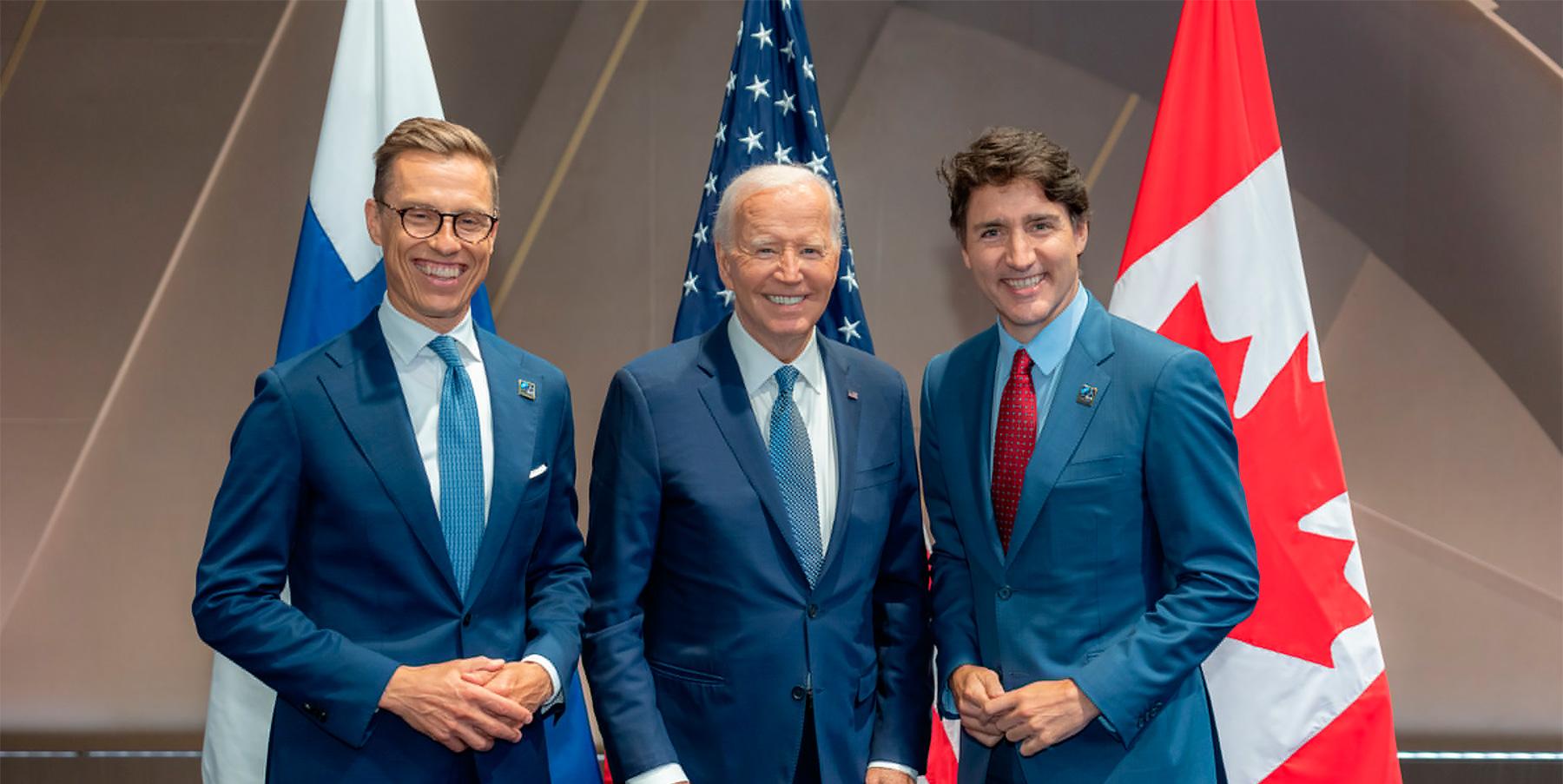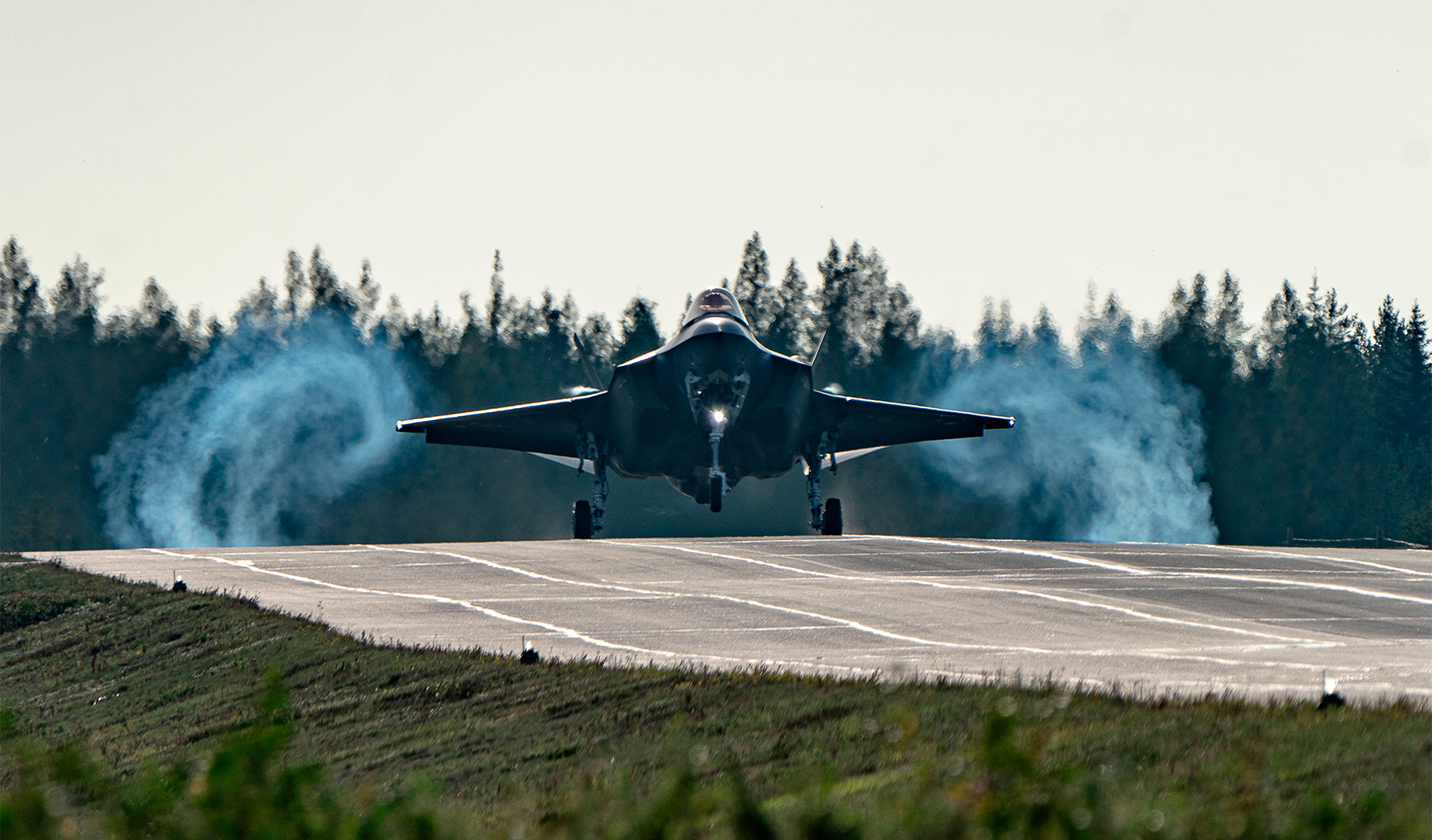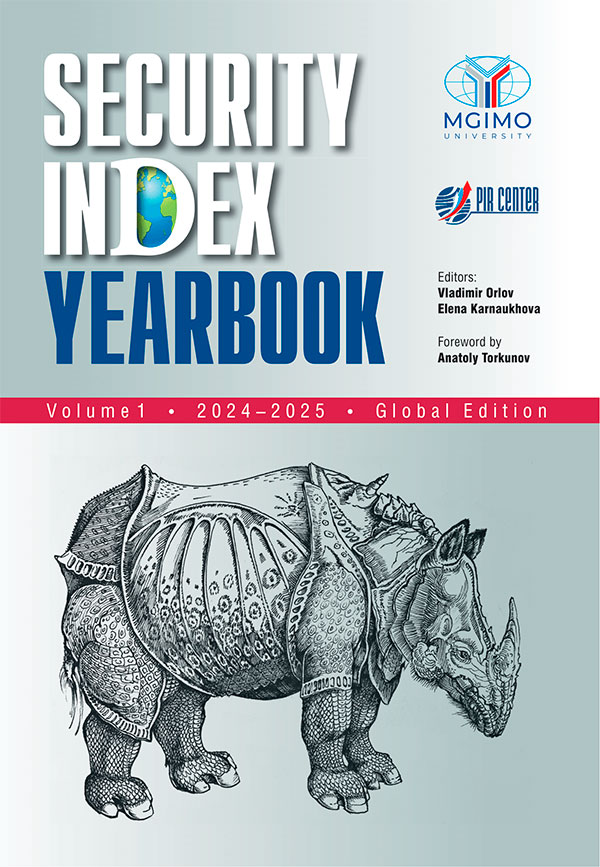Russia is a distinctly Nordic country. Historians still debate whether this perpetual drive to the North has been a Russian blessing or a Russian curse. The expansion in the Northern direction offered the nation a variety of unique opportunities, but it also created numerous challenges that other Europeans never confronted. In any case, this movement had a critical formative impact on forging the Russian character and left a deep imprint on the national mentality. This heritage will undoubtedly stay with Russians in future, affecting their perceptions of themselves, the overall worldviews as well as many specific economic, social, military and other decisions.
Today, the Arctic region houses less than 1.3% of Russia’s population, but it accounts for some 12–15% of the national GDP and for 25% of all the exports. One fifth of all Russia’s oil and four fifth of natural gas are extracted here. The Arctic continental shelf, which remains not fully explored, contains even more hydrocarbons—at least 85 tln cubic meters of natural gas and 17.3 bln tons of oil. With many old easily accessible deposits of hydrocarbons on the continent being depleted, the only way for Russia to remain an energy superpower is by moving further North and by mustering its capacities of offshore drilling under quite harsh climate and weather conditions. Beyond oil and gas, Russia’s Arctic can offer such important minerals as nickel, copper, iron core, rare earth elements, platinum, palladium, etc. Another evident economic opportunity for Russia in the Arctic region is the Northern Sea Route (NSR)—a 5,600 km long transportation corridor that remains the shortest shipping route between Europe and the Asia-Pacific. With the Arctic ice melting and navigation seasons in the North getting longer due to global warming, NSR becomes commercially more attractive. Another assumed comparative NSR advantage is that it does not contain any security risks comparable to those existing today in the Red Sea or in the Gulf of Aden and has no physical restrictions that limit the cargo traffic through the Panama or Suez canals.
The security significance of the Arctic region for Russia has two distinctly different dimensions. First, such a long maritime border creates potential vulnerabilities and has to be protected against possible conventional encroachments (these might include not only actions taken by hostile states, but also by private poachers, human traffickers, etc.). Second, the Arctic region provides Russia with a unique unrestricted access to high seas for the national Strategic Naval Forces that are an organic part of the country’s nuclear triad; this access has to be preserved at any cost to maintain credible nuclear deterrence vis-a-vis the United States and its NATO allies. Today, Moscow invests a lot into enhancing and modernizing its military presence in the Arctic region including reopening some of the old Soviet installations that were put out of operation in 1990s and building new ones. These installations include search and rescue centers, deep-water ports, air bases and air-defense missile complexes. All these efforts notwithstanding, they clearly reflect defensive rather than offensive nature of Russia’s military posture in the Arctic region. The conventional Russia’s capacities in the region are not sufficient to confidently cut NATO communication lines in the Northern Atlantic and they can hardly justify an extended NATO forward naval deployment in the Arctic. Avoiding a self-destructive navel arms race in the Nigh North remains a critical challenge for both Russia and its Western adversaries.
Russia’s Arctic region is warming at a rate that is three times faster than the global average. In some parts of this vast territory (e.g. the North-Eastern tip of the Eurasian continent) the speed of warning is even higher. There is a widely shared view that global warming might have a positive impact on the region opening new opportunities in agriculture, transportation, fisheries, offshore oil and gas drilling and so on. Indeed, some of these opportunities might prove to be very real. However, the likely negative repercussions of global warming for the Arctic should not be underestimated. These include an accelerated coastal erosion, increased frequency of floods and other natural disasters decay of local ecosystems. The most visible manifestation of global warming detrimental impact on the region is permafrost thawing, which is expected to affect at least two thirds of the infrastructure in the coming years, including houses, bridges, railroads, highways, sea and river ports, airports and so on. The likely accelerating rise of sea levels would also have profound implications for the region; the West Siberian Lowlands are particularly vulnerable and a part of this huge landmass might ultimately turn into a seabed. Since Russia cannot stop global warming on its own, it pursues policies of climate change adaptation, including enhanced permafrost monitoring, enforcing new construction standards, creating additional wildlife sanctuaries for endangered species and reducing black carbon emissions.
Russia is a distinctly Nordic country. Its Arctic coastline stretches for twenty-four thousand kilometers, and almost two thirds of Russia’s territory is covered by permafrost. Among all Arctic states, Russia has by far the most numerous resident communities in the region in total exceeding two million people (approximately a half of the global Arctic population). All of the biggest cities to the North of the Arctic Circle—Murmansk, Vorkuta, Norilsk—are located in Russia. A very large part of Russia’s history for the last millennium has been included a relentless quest for fur, fish, timber, empty lands and new trading routes along the endless Arctic Ocean.
Historians still debate whether this perpetual drive to the North has been a Russian blessing or a Russian curse. The expansion in the Northern direction offered the nation a variety of unique opportunities, but it also created numerous challenges that other Europeans never confronted. In any case, this movement had a critical formative impact on forging the Russian character and left a deep imprint on the national mentality. This heritage will undoubtedly stay with Russians in future, affecting their perceptions of themselves, the overall worldviews as well as many specific economic, social, military and other decisions.
Economy
Today, the Arctic region houses less than 1.3% of Russia’s population, but it accounts for some 12–15% of the national GDP and for 25% of all the exports. One fifth of all Russia’s oil and four fifth of natural gas are extracted here. The Arctic continental shelf, which remains not fully explored, contains even more hydrocarbons—at least 85 tln cubic meters of natural gas and 17.3 bln tons of oil. With many old easily accessible deposits of hydrocarbons on the continent being depleted, the only way for Russia to remain an energy superpower is by moving further North and by mustering its capacities of offshore drilling under quite harsh climate and weather conditions. Beyond oil and gas, Russia’s Arctic can offer such important minerals as nickel, copper, iron core, rare earth elements, platinum, palladium, etc.
However, deep-water drilling not makes extracted hydrocarbons and other minerals quite expensive; for instance, most of sea-based oil repositories in the Arctic turn profitable with oil prices staying at USD 70–80 per barrel. With the global energy transition taking speed it is not clear whether international markets are likely to sustain long term demand for the expensive Russia’s Arctic fossil fuels. Besides, quite often this type of deep-water drilling requires a lot of state-of-the-art technologies that Russia does not always has at its disposal. For a long time, Moscow counted on its Western partners (US, Norway, Germany, UK) to get access to such technologies, but the geopolitical environment of today has made this cooperation impossible. Today, Russia counts mostly on China to replace its former partners from the West, but many China’s energy companies have to exercise caution and sometimes practice over-compliance with Western technology transfers restrictions fearing possible secondary US and EU sanctions.
Another evident economic opportunity for Russia in the Arctic region is the Northern Sea Route (NSR)—a 5,600 km long transportation corridor that remains the shortest shipping route between Europe and the Asia-Pacific. With the Arctic ice melting and navigation seasons in the North getting longer due to global warming, NSR becomes commercially more attractive. Another assumed comparative NSR advantage is that it does not contain any security risks comparable to those existing today in the Red Sea or in the Gulf of Aden and has no physical restrictions that limit the cargo traffic through the Panama or Suez canals.
Nonetheless, these are both technical and political obstacles on turning NSR into a major international transit route. The seas in the North of Eurasia are mostly very shallow and large modern deep draught container ships simply cannot use them without expensive dredging. Furthermore, the coastal infrastructure along NSR needs quite radical modernization and further maintenance. On top of these complications, today it is hard to imagine that EU states would accept NSR as a preferred transit corridor from the Asia-Pacific using Russia as the main link in this transit. This is why the odds are that in the nearest future NSR will be used mostly to serve Russia’s domestic cabotage needs as well as to ship Siberian oil, coal and LNG to China, India and other consumers in Asia. With due commitment, the annual size, which now amounts to almost 40 mln tons, can be doubled by 2030 and later on it can reach even 150 mln tons a year, but it will hardly ever successfully compete with the Suez Canal that can handle up to 150 mln tons of cargo in just one month.
Security
The security significance of the Arctic region for Russia has two distinctly different dimensions. First, such a long maritime border creates potential vulnerabilities and has to be protected against possible conventional encroachments (these might include not only actions taken by hostile states, but also by private poachers, human traffickers, etc.). Second, the Arctic region provides Russia with a unique unrestricted access to high seas for the national Strategic Naval Forces that are an organic part of the country’s nuclear triad; this access has to be preserved at any cost to maintain credible nuclear deterrence vis-a-vis the United States and its NATO allies.
A conventional challenge to the Russian Arctic could theoretically emerge either in the East, with an adversary entering the region through the Bering Strait, or in the West, from the NATO bases in North Atlantic of from Norway. The ongoing climate change and the Arctic ice melting may further increase Russia’s security vulnerabilities, opening the Arctic waters for more intense military traffic. It seems that for the time being Moscow is not particularly concerned about security challenges coming from the Asia-Pacific, though the recent changes in the defense postures of Japan and South Korea and even of a more remote Australia are significant enough to keep a close eye on them. The NATO naval capabilities in the West arguably present a much more immediate security challenge to Russia, especially with Finland and Sweden having joined the Alliance and Norway having lifted some of its earlier limitations on NATO’s use of the Northern Norwegian coastline. Being a predominantly continental military power, Russia cannot hope to defeat NATO in a large-scale conventional naval war, but it can try to deny NATO forces access to the Russian Arctic while maintaining secure access to the Northern Atlantic for the Russian Navy.
The nuclear dimension is different. The Russian Northern Fleet is the largest, the most advanced and the most strategically important fleet in the Russian Navy. Its missions are not limited to the Arctic region alone, but are explicitly global; the Northern Fleet should be in a position to operate in any remote corner of the planet deterring a nuclear attack on the Russian Federation. Some of the newest types of Ballistic Missile Submarines (Borei-class) and Nuclear Attack Submarines (Yasen-class) are operating from Arctic bases, as well as many surface battleships including the sole aircraft carrier that Russia has now (“Admiral Kuznetsov”). The choice of the Arctic region to host a critically important component of the national strategic deterrence force was to a degree involuntary—both the Black and the Baltic Seas are semi-enclosed and exits from them are easy to block, and the free access to the Pacific Ocean for Russia is restricted by the US military infrastructure in Japan, in South Korea and in Alaska.
Today, Moscow invests a lot into enhancing and modernizing its military presence in the Arctic region including reopening some of the old Soviet installations that were put out of operation in 1990s and building new ones. These installations include search and rescue centers, deep-water ports, air bases and air-defense missile complexes. All these efforts notwithstanding, they clearly reflect defensive rather than offensive nature of Russia’s military posture in the Arctic region. The conventional Russia’s capacities in the region are not sufficient to confidently cut NATO communication lines in the Northern Atlantic and they can hardly justify an extended NATO forward naval deployment in the Arctic. Avoiding a self-destructive navel arms race in the Nigh North remains a critical challenge for both Russia and its Western adversaries.
Environment and Social issues
Russia’s Arctic region is warming at a rate that is three times faster than the global average. In some parts of this vast territory (e.g. the North-Eastern tip of the Eurasian continent) the speed of warning is even higher. There is a widely shared view that global warming might have a positive impact on the region opening new opportunities in agriculture, transportation, fisheries, offshore oil and gas drilling and so on. Indeed, some of these opportunities might prove to be very real. However, the likely negative repercussions of global warming for the Arctic should not be underestimated. These include an accelerated coastal erosion, increased frequency of floods and other natural disasters decay of local ecosystems. The most visible manifestation of global warming detrimental impact on the region is permafrost thawing, which is expected to affect at least two thirds of the infrastructure in the coming years, including houses, bridges, railroads, highways, sea and river ports, airports and so on. The likely accelerating rise of sea levels would also have profound implications for the region; the West Siberian Lowlands are particularly vulnerable and a part of this huge landmass might ultimately turn into a seabed. Since Russia cannot stop global warming on its own, it pursues policies of climate change adaptation, including enhanced permafrost monitoring, enforcing new construction standards, creating additional wildlife sanctuaries for endangered species and reducing black carbon emissions.
On top of the growing climate change pressure, Russia has to face many social problems in its Arctic region. The overall Arctic population of the country is steadily declining all the time since the disintegration of the Soviet Union. Though the decline is not very steep—up to 20 thousand people a year,—for a rather modest Arctic community it is nevertheless quite significant. The Arctic salaries usually exceed Russia’s average, but the costs of living in the region are also higher than in the South. Long and dark winters, harsh cold winds and generally inhospitable environment do not provide incentives to settle in the region. The federal government is trying to cope with this problem by offering affordable housing loans, investing into public transportation and health systems, supporting local colleges and Universities and subsidizing social and cultural life in the region. A lot will depend on whether the Russian leadership has the needed resources to continue these initiatives for a long time and whether economic activities in the Arctic can go far beyond extracting mineral resources, fishing and transportation.
Like many other Arctic countries, Russia faces many challenges related to indigenous communities residing in the North. Altogether these communities amount to approximately 250 thousand people belonging to at least forty different ethnic groups. Climate change is only one side of the problem that these groups face today though it contributes to shifting animal migration patterns, disrupting subsistence practices like reindeer herding and fishing, inundating villages and threatening traditional ways of life. However, even putting aside global warming one should confess that oil and gas exploration as well as other large-scale mineral resources extraction projects often lead to pollution and displacement of indigenous peoples from their ancestral lands. At the same time, being scattered along very large territories, indigenous peoples face difficulties in accessing healthcare, education, and legal services. It is not easy to combine traditional cultural and social practices with successful careers in modern business or in the rapidly changing public sector.
There are no magic solutions to indigenous people’s problems. Yet, the existing Russian and foreign experience suggests that that the severity of these problems can be significantly reduced by implementing a broad range of economic, administrative, legal and social actions. These actions should include engaging representatives of indigenous population into bodies of local self-governance, shifting economic modernization plans from extensive growth to sustainable development, building resilient private-public partnership with local NGOs engaged, creating systems for assessing the impact of climate change on indigenous communities and involve them in environmental monitoring.
First published in the Guancha.cn.







